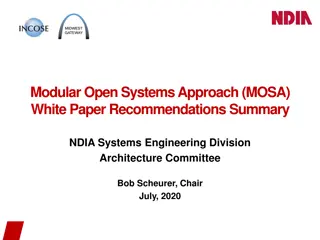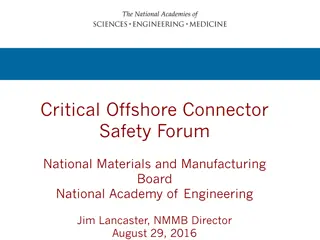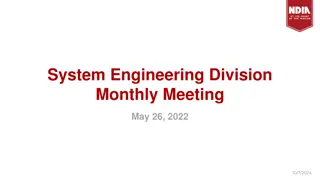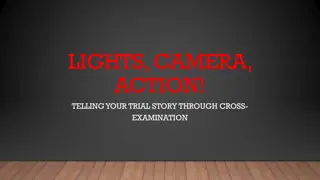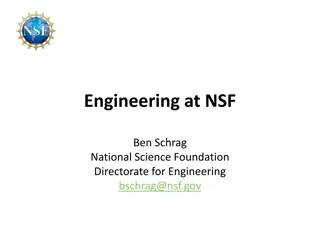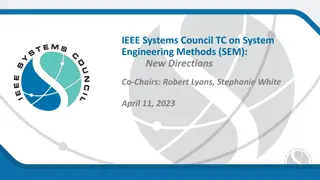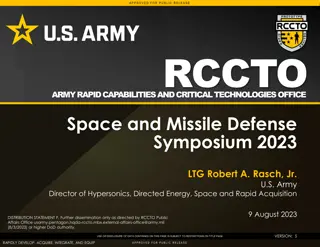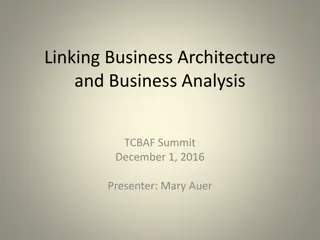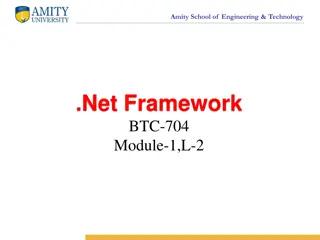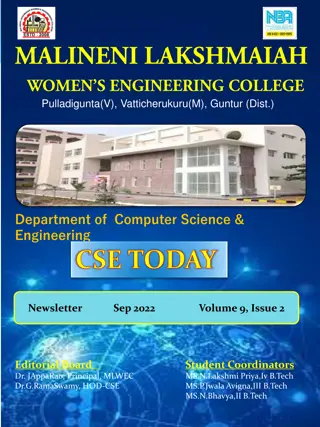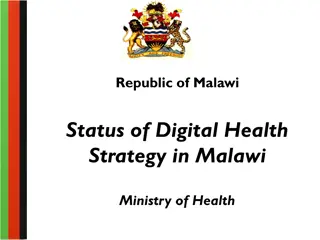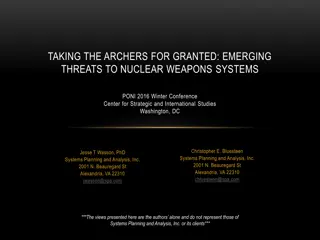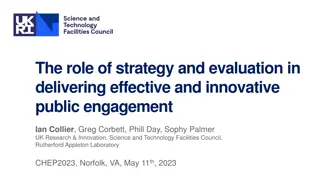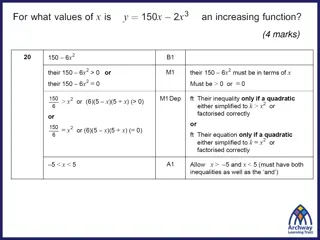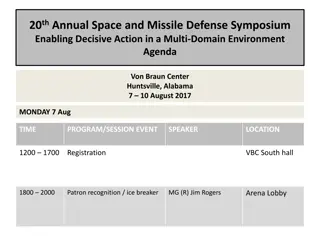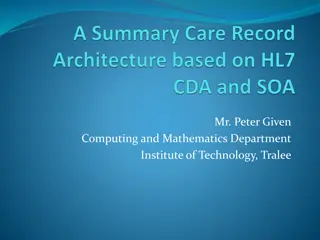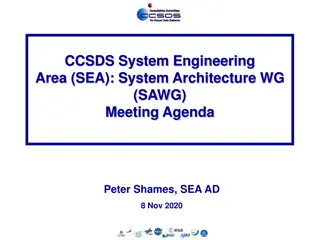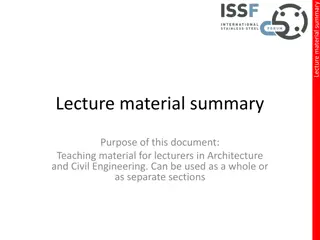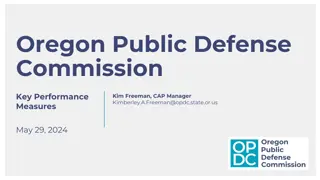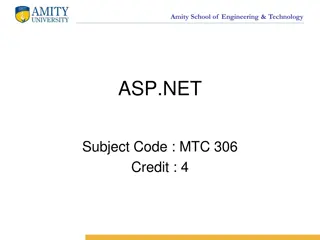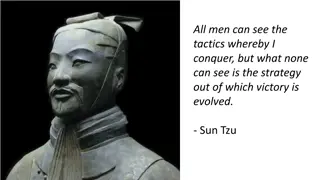National Defense Science & Technology Strategy 2023: Key Points for Systems Engineering & Architecture Discussion
The 2023 National Defense Science and Technology Strategy focuses on leveraging American advantages such as creativity, innovation, and adaptation. It addresses the challenge of adversaries developing capabilities faster by adjusting approaches and engaging the private sector. Strategic lines of effort include creating and fielding capabilities rapidly, investing in information systems, and fostering a vibrant defense innovation ecosystem. Collaboration among DoD, services, industry, and other organizations is emphasized for joint experimentation and prototyping. The strategy aims to address complex security challenges and streamline R&D processes for more effective acquisition and sustainment.
Download Presentation

Please find below an Image/Link to download the presentation.
The content on the website is provided AS IS for your information and personal use only. It may not be sold, licensed, or shared on other websites without obtaining consent from the author. Download presentation by click this link. If you encounter any issues during the download, it is possible that the publisher has removed the file from their server.
E N D
Presentation Transcript
National Defense Science & Technology Strategy 2023 Key Points for Systems Engineering & Architecture Discussion for NDIA SE Division Meeting 22 June 2023 Monique Ofori (OUSD)R&E SE&A (Lead SE Contractor Support) Ed Moshinsky (OUSD)R&E SE&A (SE Contractor Support)
Background 2023 National Defense Science and Technology Strategy https://media.defense.gov/2023/May/09/2003218877/-1/-1/0/NDSTS-FINAL-WEB-VERSION.PDF In alignment with: 2022 National Security Strategy https://www.whitehouse.gov/wp-content/uploads/2022/10/Biden- Harris-Administrations-National-Security-Strategy-10.2022.pdf National Defense Strategy (NDS) https://media.defense.gov/2022/Oct/27/2003103845/-1/- 1/1/2022-NATIONAL-DEFENSE-STRATEGY-NPR-MDR.PDF Focus: leverage asymmetric American advantages: our entrepreneurial spirit and our diversity and pluralistic system of ideas and technology generation that drive unparalleled creativity, innovation, and adaptation.
The Defense Science and Technology Challenge New realities of global technology development; our adversaries are developing capabilities faster, threatening our technological advantages. DoD must adjust its approaches to counter this More proactive with private sector to make the right investments in emerging technologies Preempt adversaries by protecting critical and emerging technologies early in the development cycle Solve increasingly complex security challenges that involve science and technology. Approach New DoD processes to engage technological innovation base and Industry to address emerging strategic competition New mechanisms for supporting R&D with more effective pathways for acquisition and sustainment Divest outdated legacy systems and risk-averse processes. Strategic Lines of Effort Focus on the Joint Mission Create and field capabilities at speed and scale Ensure the foundations for research and development
Focus on the Joint Mission Invest in information systems and establish processes for rigorous, threat- informed analysis to better enable DoD to make informed choices in its S&T investments. Make the right technology investments (Critical Technology Areas) Rigorous Analysis at the Mission Level Campaign-level system-of-systems models and simulations Integrating physics-based models into campaign-level system-of-systems models M&S coupled w/ technology monitoring to inform future critical technology investments Joint Experimentation Continuous and iterative joint experimentation Collaboration between DoD, Services, and Industry Emphasis on prototyping and experimenting with capabilities
Create & Field Capabilities at Speed and Scale Foster vibrant defense innovation ecosystem, accelerate transition of new technology into field, communicate effectively inside/outside DoD. Defense Innovation Ecosphere to overcome Valleys of Death Increased partnerships w/ current and non-defense orgs (academia, FFRDCs, UARCs, national laboratories, Services Innovation Centers, non-profits, commercial industry, other Govt. agencies, international allies/ partners) Innovate Industrial Processes thru Manufacturing Innovation Institutes Continuously Transitioning Capabilities thru prototyping and experimenting Collaboration among R&E, A&S, Services, and acquisition & Sustainment communities. Clear Communications DoD Innovation Steering Committee (ISG); enhanced DoD outreach to industry, academia, and other Gov t agencies. Robust technology protection paradigms
Ensuring the Foundations for Research & Development Recruit, retain, and cultivate talent; revitalize our physical infrastructure; upgrade our digital infrastructure; and nurture stronger collaboration across all stakeholders. Enhance Lab and Test Infrastructure Upgrade Digital Infrastructure to improve information sharing and knowledge management Cultivate the Current Workforce Empower our scientists and engineers to grow their knowledge and skills Increase collaborative efforts with private sector (e.g. Defense Ventures Fellowship) Align w/ FFRDCs, UARCs & Industry (e.g. Engineer & Scientist Exchange Program (ESEP)) Modernize training to address needed technical skills Invest in the Workforce of Tomorrow Focused STEM programs (Defense STEM Education Consortium (DSEC), National Defense Education Program (NDEP), Science, Mathematics Research for Transformation (SMART) Program)



